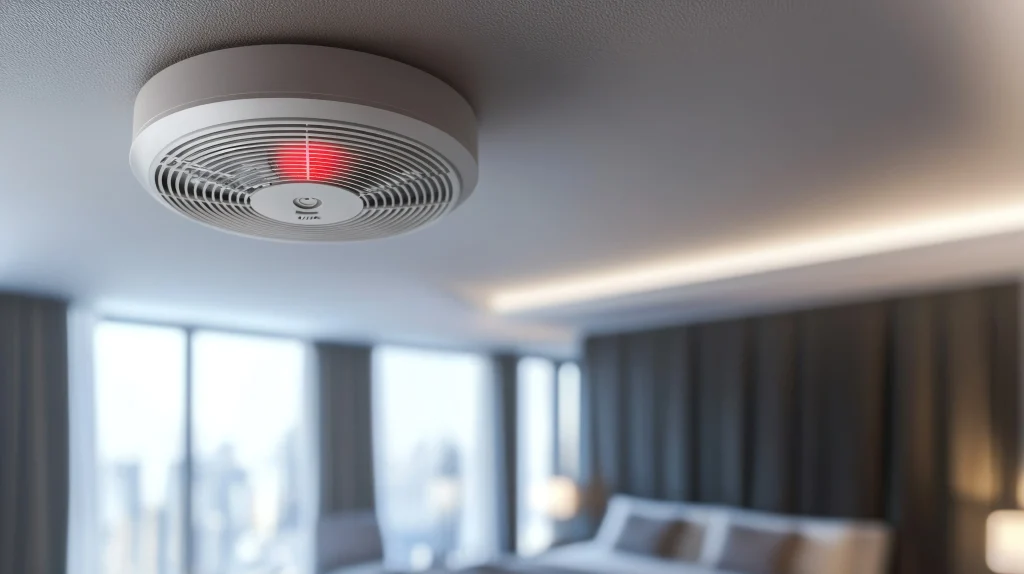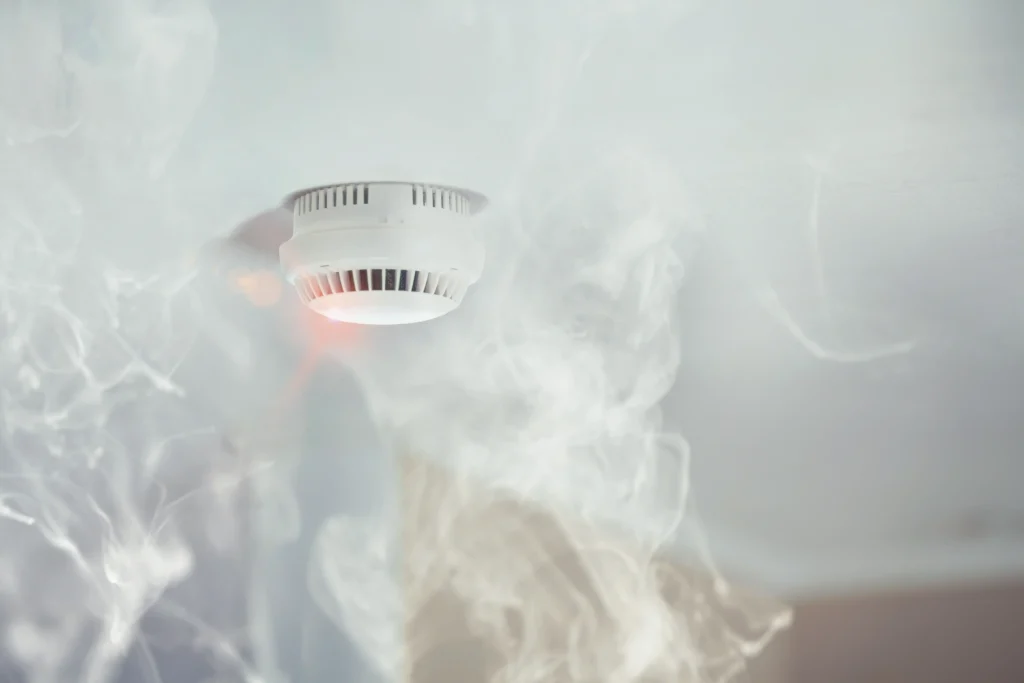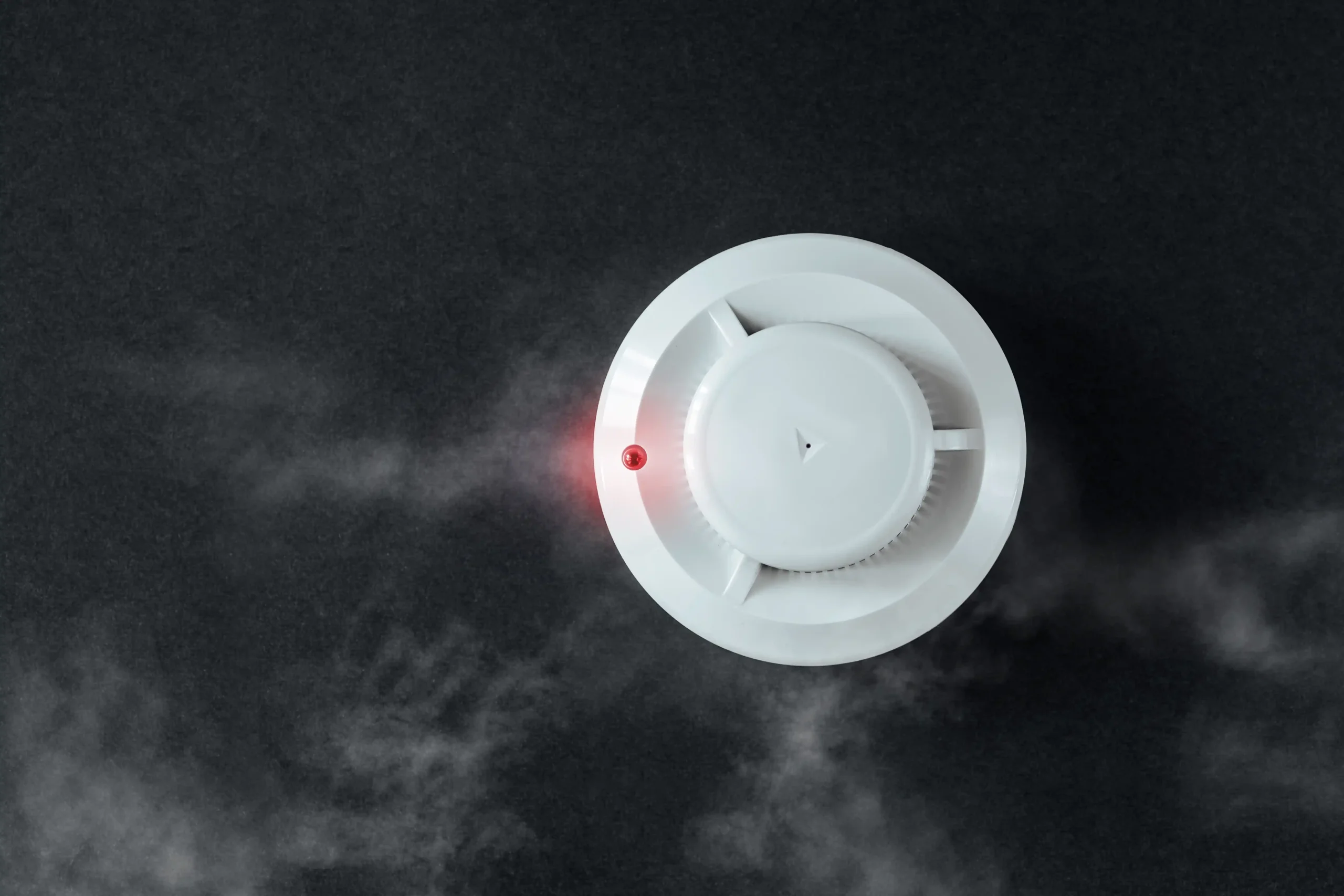Smoke Alarm Installation in Albany is not just a safety check – it’s a lifesaver for you and your family. Imagine an early fog of smoke rolling in from the hills around Mount Barker or a midnight electrical fault in your bedroom: a working smoke alarm will save the day (or night) by giving you precious seconds to escape. In this guide, we’ll walk you through the legal requirements in Western Australia, explain the types of alarms, show you where and how to install them safely, and give tips on maintenance. Think of this as a friendly chat with a neighbour (or your local firefighter), sprinkled with a dash of humour and practical advice – because we’ve all been tempted to ignore that low-battery beep, only to feel silly later!
Understanding Smoke Alarm Laws in Western Australia
In WA, smoke alarm rules are surprisingly strict – and for good reason. The Building Code of Australia (BCA) says all smoke alarms must meet Australian Standard AS 3786. That standard covers both photoelectric and ionisation alarms and ensures they work reliably. The WA Department of Fire and Emergency Services (DFES) even recommends photoelectric alarms, which are better at detecting slow, smouldering fires.
Crucially, if your home was built, renovated or sold after certain dates, you must have mains-powered smoke alarms. For example, any house newly built or significantly renovated after 1 July 1997 must have hard-wired alarms. Similarly, if your house changed ownership (sale, rent, or hire) after 1 October 2009, it needs mains-powered alarms too. In plain English: when buying or selling in Albany, make sure the smoke alarms are up to code.

By law, each alarm must be hard-wired (permanently connected to 240V mains) unless there’s literally no way to run wiring (e.g. in a solid concrete ceiling). Even then, battery alarms are only allowed if they have a 10-year sealed battery (no removable batteries). And remember – no more than 10 years old! Alarms over a decade old must be replaced. Finally, always use a licensed electrician for mains installations or any rewiring work. It’s in the regulations for safety’s sake (and to avoid a big fine).
In summary, Western Australian authorities insist that your alarms are:
- Compliant with AS 3786 (look for an AS 3786:2014 label on the device).
- In working order (test them!).
- Permanently mains-powered (or approved 10-year battery).
- Interconnected if more than one alarm is installed.
- Replaced at 10 years old.
Keeping on the right side of these laws not only keeps you safe but also keeps your home saleable. After all, nobody wants to hear “oh, you’ll need to rewire those smoke alarms” at closing time.
Types of Smoke Alarms: Photoelectric vs Ionisation
Not all smoke alarms are created equal! The two main types are photoelectric and ionisation, plus an optional heat alarm for special areas. Here’s the scoop:
- Photoelectric Smoke Alarms use a light beam to detect smoke. When smoky air enters the sensing chamber, it scatters the light onto a sensor and triggers the alarm. These are excellent at spotting slow, smouldering fires (think mattress or sofa on fire) because they see the thick smoke that goes with it. DFES explicitly recommends photoelectric alarms for homes. They also tend to give fewer false alarms from cooking (a bonus for when you burn the toast).
- Ionisation Smoke Alarms have a tiny radioactive source that detects small particles from fast-flaming fires (like a rapid grease fire). They respond quickly to open flames. However, ionisation alarms can false-alarm more easily (kitchen steam or shower spray can set them off). For this reason, many households use photoelectric alarms indoors and reserve ionisation alarms or heat alarms (which trip on rapid temperature rise) for areas like garages or near kitchen ranges.
- Heat Alarms sense temperature, not smoke. They’re great in dusty or humid areas (garage, laundry, near a heater) where smoke alarms would constantly false-alarm. Heat alarms should still be interconnected with your smoke alarms, so everything goes off together if a fire breaks out.
Battery options: If you can’t wire mains power to a spot (solid ceiling, etc.), install a 10-year lithium battery alarm. These clocks behind the smoke detectors mean you won’t be replacing batteries each year – no more “chirp” at 2 am! In fact, DFES praises 10-year battery alarms for their convenience. (Just remember: after 10 years you still swap out the whole unit.)
Here’s a quick comparison:
| Feature | Photoelectric | Ionisation |
| Detects best | Smouldering fires (thick smoke) | Fast-flaming fires (small particles) |
| Typical use | Inside home (bedrooms, lounge) | Garages, workshops, or areas with rapid fires |
| False alarm risk | Lower (less triggered by cooking) | Higher (sensitive to cooking fumes) |
| Preferred by DFES | ✔ Recommended for homes | Generally not preferred indoors |
| Power source | Usually mains (with battery backup) or 10-year lithium | Can be mains or battery (subject to same regs) |
In practice, many fire safety experts (and your friendly local smoke alarm technician) suggest mains-powered photoelectric alarms everywhere indoors, with interconnection between them. Then, add a heat alarm in the garage or dusty attic if needed. This mix gives you quick warning for both stealthy and fast fires.
Remember: any alarm you buy should clearly state AS 3786 compliance (a little sticker or stamping on the unit). This ensures it meets Australian standards for detection and safety.
Where to Place and Maintain Your Smoke Alarms
Even the best smoke alarm is useless if it’s in the wrong place. Follow these guidelines:
- Sleeping areas and living spaces: You need a smoke alarm in every bedroom, outside each sleeping area, and on every level of your house. In practice, this means at least one alarm on each floor and extra ones in hallways near bedrooms. Figure 1 below illustrates this clearly: every bedroom, lounge, and hallway has an alarm.
Figure: A properly equipped home has smoke alarms in every bedroom, hallway and living area. Early warning anywhere in the house (even in Albany’s basement) can save lives.
- Ceiling vs wall placement: Install alarms on the ceiling whenever you can, at least 300 mm away from any corner or wall . Smoke rises, so central placement on the ceiling catches it fastest. If you must mount on a wall (e.g. cathedral ceiling not reachable), put it 300–500 mm below the ceiling line. Avoid dead-air zones: don’t tuck alarms right into the sharp apex of a cathedral ceiling (that “dead air” can delay detection)【11†source】. As shown in Figure 2, keep alarms at least 500 mm from the peak of angled ceilings【11†source】.
Figure: Smoke alarm clearance requirements. Keep alarms at least 300 mm from walls/corners, and 500–1500 mm from roof apex, to avoid “dead air” gaps (WA BCA guideline).
- Special rooms: Don’t put alarms too close to ovens, heaters or fans. Steam from a shower or fumes from cooking can set them off falsely. DFES recommends heat alarms in places like kitchens, garages or dusty sheds instead. In a nutshell, stick to living areas and hallways, and skip the direct bathroom or stove surroundings.
- Height rule for sloping ceilings: If you have a sloped ceiling, position the alarm 500–1500 mm down from the highest point. This keeps it in the “path” of rising smoke, not stuck in the very peak.
- Interconnection: If you have more than one alarm (and who doesn’t these days?), make sure they’re all interconnected. That way, if the kitchen alarm trips at 2 am, the bedroom alarm screams too – letting everyone wake up. WA law actually requires interconnection for homes built after May 2015. Today’s wireless interconnect options make this easier without rewiring.
- Accessible for maintenance: While we say “never paint over a smoke alarm”, also don’t bury it under piles of laundry or curtains! Make sure you can reach it to test, clean, and replace batteries.
Following these placement rules puts your alarms exactly where they can warn you best. And yes, you should test them regularly. As DFES bluntly reminds us: “Smoke alarms are your first line of defence… Don’t leave your safety to chance – install, test, and maintain your smoke alarms regularly.”. In practice, test your alarms monthly by pressing the big “test” button. Keep them free of dust (a vacuum brush works) and if they chirp late at night complaining about low battery, don’t angrily kick the wall – simply replace that 9V battery or the whole unit if it’s a 10-year model.
Step-by-Step: Installing Smoke Alarms Safely
Ready to install or upgrade your smoke alarms? Here’s a practical guide:
- Plan & Check Regulations: First, know how many alarms you need. For most Albany homes, this means at least one per bedroom, one in the hallway outside bedrooms, and one on each other level (e.g. ground floor living area). If your home is being sold or rented, ensure compliance: they must be mains or approved 10-year battery, under 10 years old, and AS 3786-compliant.
- Gather Tools & Supplies: You’ll need the smoke alarms themselves (photoelectric mains units recommended), mounting brackets (usually included), screws and wall plugs, a ladder, drill, screwdriver, and a voltage tester (for electricians). Keep a notepad or phone handy to mark where each alarm goes.
- Hire a Licensed Electrician (if wiring): If you’re installing mains-powered alarms, call an electrician. By WA law, hard-wiring smoke alarms to the house mains must be done by a licensed sparkie. They’ll also handle interconnecting them. (Pro tip: schedule this during daylight, because dealing with live circuits can’t be done from a roof ladder after dark!) If you have permits or rental regs, this also ensures inspections won’t fail.
- Mount the Alarms: For each smoke alarm location:
- Use the mounting plate template to mark holes on ceiling.
- Drill holes, insert plugs, and screw in the base plate.
- If it’s a mains alarm, the electrician will wire it (usually to a nearby ceiling light junction box).
- If battery-powered, simply attach the base with screws, then snap the alarm into place and insert the battery (or use its internal battery if sealed).
- Remember the spacing rules: at least 300 mm from corners/walls and away from vents or lights.
- For angled ceilings, follow the 500–1500 mm rule from the apex.
- Use the mounting plate template to mark holes on ceiling.
- Interconnect (if multiple alarms): Modern mains alarms can be interconnected by a wire or wirelessly. The electrician will daisy-chain them so one goes off, they all do. If you use battery alarms, some also have wireless interconnect (check the model).
- Test Each Alarm: Once installed, press the test button on each one. You should hear a loud chirp. If nothing happens, double-check the power or batteries. If it won’t test, call your electrician or supplier. Also test with actual smoke (candle smoke or incense near it) occasionally.
- Label and Note Installation Date: Write the installation date (and battery replacement date) on a sticker on the back of each alarm. This makes it easy to know when you hit that 10-year mark.
- Document for Compliance: Keep a record (even a smartphone photo) of each alarm showing model and installation date – especially if you’re selling or renting, you’ll need evidence they comply with regulations.
Along the way, keep a sense of humour. Installing smoke alarms might mean climbing awkward angles (wear your hard hat if you have one!), and yes, your ladder might shake when the alarm chirps under your nose. But that quick “beep” is a good sound: it means the system is working, unlike the alternative!

Maintenance and Ongoing Safety
Installation is only half the battle. To stay safe:
- Test monthly. Press the test button each month (even Christmas Day). If the alarm doesn’t sound or only beeps weakly, fix it now (new battery or replacement).
- Replace batteries yearly (if not sealed 10-year). If your alarm uses a removable battery, swap it every 12 months. A small calendar sticker helps you remember the next change.
- Clean yearly. Dust can clog sensors. Vacuum gently around each alarm or use a soft brush. Don’t paint over them or cover them.
- Replace alarms at 10 years. All smoke alarms have a “use by” date (most commonly 10 years from manufacture). After that, they become unreliable. Program an alarm into your calendar to replace the unit when its time’s up.
- Keep spare batteries on hand. If you have 9V alarms, keep a couple of spares around so you’re not scavenging the junk drawer at 3 am.
- Alarm etiquette: If an alarm goes off while you’re sure there’s no fire, don’t just pull the battery. Check the room (could be a forgotten candle or burnt toast) and fan the alarm or open a window. If nuisance alarms happen frequently, consider moving that alarm or switching to a heat alarm in that spot.
By staying on top of maintenance, your Albany home will stay safe. And give yourself credit: regular checks mean your smoke alarm truly is your first line of defence, alerting you early if fire strikes.
Smoke Alarm Installation in Albany: Key Takeaways
- Follow the law: WA requires AS 3786-compliant alarms, less than 10 years old, hardwired if applicable.
- Use the right type: Go for mains-powered photoelectric smoke alarms in living spaces, with interconnection.
- Install in every bedroom, living area and level: Place alarms on the ceiling, 300–500 mm from corners.
- Test and maintain: Check alarms monthly and replace them at the 10-year mark.
For more detailed guidance, you can consult the WA Department of Fire and Emergency Services’ smoke alarm safety tips and the WA Building Commission’s smoke alarm laws.
With proper Smoke Alarm Installation in Albany and a bit of upkeep, you’ll sleep easier knowing your home is ready to alert you at the first hint of trouble.
FAQs
Q: Is it mandatory to have hard-wired smoke alarms in WA homes?
In many cases, yes. Western Australia law requires mains-powered (hard-wired) alarms if your home was built or renovated after July 1997, or if it’s being sold, rented or hired after 1 Oct 2009. You can use a 10-year sealed battery model only when wiring isn’t possible. Always check the latest WA regulations or ask an electrician for clarification.
Q: What’s the difference between photoelectric and ionisation smoke alarms?
Photoelectric alarms see large smoke particles and are best for slow, smouldering fires (like a cigarette on a sofa). Ionisation alarms sense tiny particles and react quicker to fast flames (like a stove flare-up). DFES recommends photoelectric alarms indoors for general home use. Some homes install both types, or use heat alarms in kitchens to reduce false alarms.
Q: How often should I test and replace my smoke alarms?
Test each alarm monthly by pressing its test button. Replace batteries once a year (if not using a 10-year sealed battery). Every smoke alarm should be completely replaced around the 10-year mark, even if it still “works”. Keep a note of your installation date so you know when it’s due for renewal. Regular tests and timely replacements ensure your alarms won’t let you down in an emergency.

